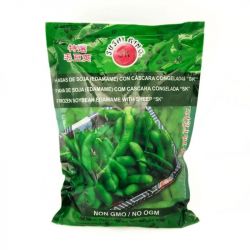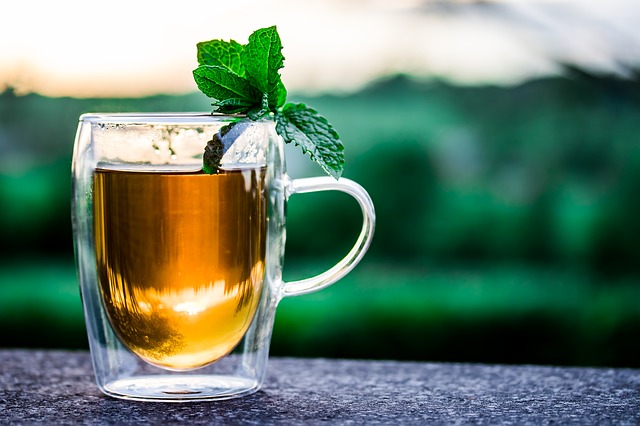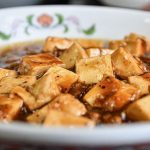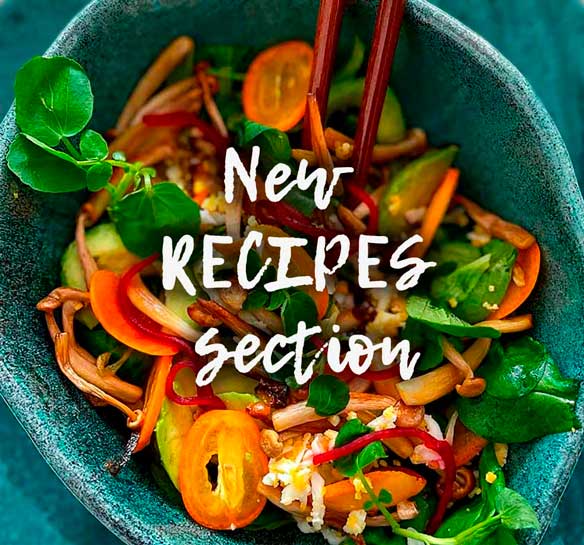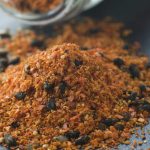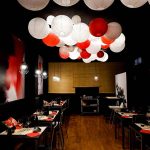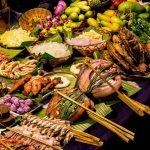How are edamame cooked?
The truth is that the preparation of edamame is really simple: the green soybean pods are harvested before they ripen and the ends of the pods are cut off before boiling. Cooking can be done in a bain-marie or steaming, adding salt during the process or once the pods are cooked. Although some people eat it freshly boiled, edamame is most often served cold with soy sauce and ginger.
Some recipes add other types of seasoning, such as five-spice powder, Sichuan pepper or jiuzao, a Chinese seasoning obtained from the distillation of rice wine. The seeds are most commonly eaten whole, although they can be ground and served as a spread. Many markets in Asia sell seasonings specifically for this use.
Ingredients you can buy in our online shop
Salsa de Soja (JIA JIA SHAN) 150ml
4,15 €
Salsa de Soja Sin Gluten (KIKKOMAN) 250ml
6,15 €
Jengibre rosa en conserva (SUSHI KING) 100sobresx5g
6,494,54 € (30,00 %)
Salsa de soja KIKKOMAN baja en sal de 150 ml
4,69 €
Habas de soja-edamame crudo (SUSHI KING) 400g
2,07 €
In recent years, other ways of preparation have emerged, and frozen edamame can now be found on the market, as they have to be consumed before the vegetable has reached maturity, making them an ideal alternative to preserve their properties and freshness after harvesting. Sweet and buttery in flavour, it is one of the healthiest snacks we can include in our diet, as well as being a great source of energy comparable to spinach, lentils or eggs.
What is Edamame?
Those of you who are fans of Asian cuisine will surely already know that edamame is one of the main stars of the starters menu of any self-respecting Asian menu. These boiled soybean pods are not only delicious, but also have multiple properties and health benefits.
Within the food industry, soya is one of the most versatile and recurrent types of legumes. In fact, soya is used to produce flour, oil, milk, sauces, miso… The culture of the East has known how to make the most of this vegetable, which has spread to find its way into Western cuisine with notable success.
Those who follow a vegetarian diet are not only aware of these derivatives, but also consume the pods of the fresh soya bean, a snack called edamame. It should be remembered that edamame is not the name given to the green pods of the soya bean, but the name given to the processing of this ingredient.
Origin and history
The history of this food can be traced back to a reference dating back to 1275. This is a handwritten note by Nichiren, a Japanese Buddhist monk, who thanked his followers for bringing edamame to his temple. There are also documents dating back to 1406, during the Ming dynasty, which refer to the consumption of edamame, but under the name maodou.
As early as 2003, the name edamame was recorded in the Oxford English dictionary, and a few years later the first soya beans were cultivated on the European continent. As a linguistic curiosity, edamame can literally be translated as “bean stalk”: “eda” is branch or stalk and “mame” means bean.
Health properties
Edamame is a low-calorie, gluten- and cholesterol-free snack and a source of iron, calcium and protein. In addition, it has many health-promoting properties.
- Age-related brain diseases: People who consume soy or edamame regularly are generally less affected by age-related brain disorders.
- Cardiovascular problems: the intake of soy protein as an alternative to meat protein reduces levels of bad cholesterol (LDL), which helps to prevent atherosclerosis and regulate blood pressure.
- Prostate cancer and breast cancer: genistein, a member of the isaflavone category, is found in large proportions in soya, and contains antioxidants which prevent the growth of cancer cells of this type. According to some studies, 10 milligrams of soya or edamame a day reduces the development of breast cancer by up to 25 %.
- Depression: edamame inhibits depressive episodes by preventing excess dehomocysteine in the body. In fact, with adequate levels of haemocysteine, the body produces more of the hormones dopamine, serotonin and norepinephrine, which regulate mood, sleep and appetite.
- Diabetes: people with type 2 diabetes often experience kidney disorders, so that they excrete excessive amounts of protein in their urine. Recent studies have shown that people who consumed only soya protein in their daily diet excreted less protein than those who consumed only animal protein.
- Fertility: women who consume iron from vegetables such as edamame, spinach and pumpkin are more likely to become pregnant, a Harvard Medical School study has found.
- Osteoporosis: the isoflavones in edamame or soya reduce bone loss, increasing bone mineral density during vital periods such as the menopause.






